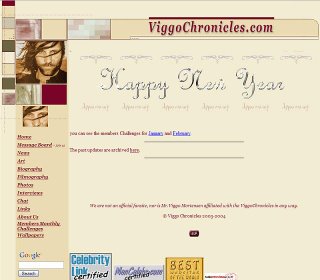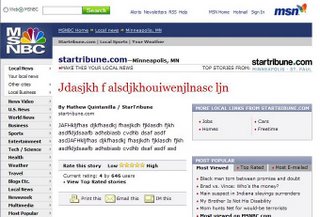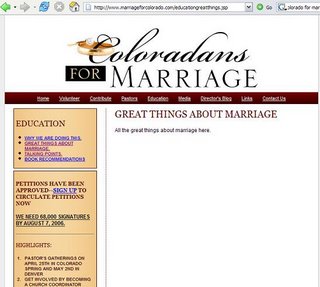Friday, March 02, 2007
Sunday, June 04, 2006
Monday, May 22, 2006
nytimes.com: 1996

The New York Times was an innovator in the early years of the WWW. They were one of the first newspapers to deliver content online and they continued to offer the content for free (with registration) for many years. Once they had a contest to rewrite the motto 'All the news the fit to print' for their online edition. This early site from 1996 but with a 45K size main graphic was a pain to download over a 28 baud modem.
Tuesday, May 16, 2006
Gopher: early 1990's

The Gopher Procotol was a pre-http hypertext transfer protocol popular in the early 1990's. It was used a lot by colleges and researchers to shared information. Gopher forces a hierarchical site design similar to directories and files. The HTML markup language used for the world wide web allows for addressing other pages from any other pages. Although gopher once was more popular than ftp, there are not many gopher sites left. Voice of America continues to provides a gopher newsfeed, which is a precursor to rss feeds. Mozilla still supports the gopher protocol. The floodgap.com site has a gopher to web gateway so that you can still browse any gopher sites by Internet Explorer.
Monday, May 08, 2006
Bartcop.com: 1996

Lately, I've been looking for sites that were transitions from UseNet newgroups to Web pages. Bartcop is a great example. He started out as a chronic poster to alt.fan.rush-limbaugh and it evolved into a newsletter then to simple web pages. Now it's a full website with subscriptions, discussion groups, radio shows, advertisements. It's still has chronic content, but it's admirable that it has lasted for ten years.
Note: 'chronic' is a talk radio industry term for a caller to a show who goal is to torment hosts by challenging them logically, changing the subject, or up-staging the host. Lionel from WOR in New York is an example of a chronic caller who became a national syndicated show.
Monday, May 01, 2006
L.A.con III, the 1996 Worldcon

I love this L.A.con III home page. This 1996 website, put up by the World Science Fiction Society, is a great example of the trends that were going on at that time. This website had everything: the square icon clip art every website seemed to have, the 'new' icons on every link and the use of links to text (.txt) documents. The inclusion of the text documents enable the reuse of content on websites and in Usenet newsgroups. In the mid 1990's, Usenet newsgroups and BBS were still a primary way for technology focused folks to share information. Note that cassettes were used to for recordings of sessions.
Thursday, April 27, 2006
Web Art: The award winning text.jodi.org

In 1999, The Webby committee awarded jodi.org with the best Net Art Webby Award. Jodi was a collaboration between European artists Joan Heemskerk and Dirk Paesmans. The website was a surreal mixture of Bit Dumps, HTML, and PC machine code images. This art project was a farewell to the old days of PC's, Atari 5200, and Commadore 64's and preview of the new world of Web Design.
Sunday, April 23, 2006
Thursday, April 20, 2006
It's always New Years for Viggo

It's April and it's still New Years on Viggo Chronicles. I spoke to the webmaster and she tells me that they intend to update the web site, but she is new to the job and have quite a lot to learn. This demonstrates the importance of content management and how content can spoil if it's not kept up to date.






